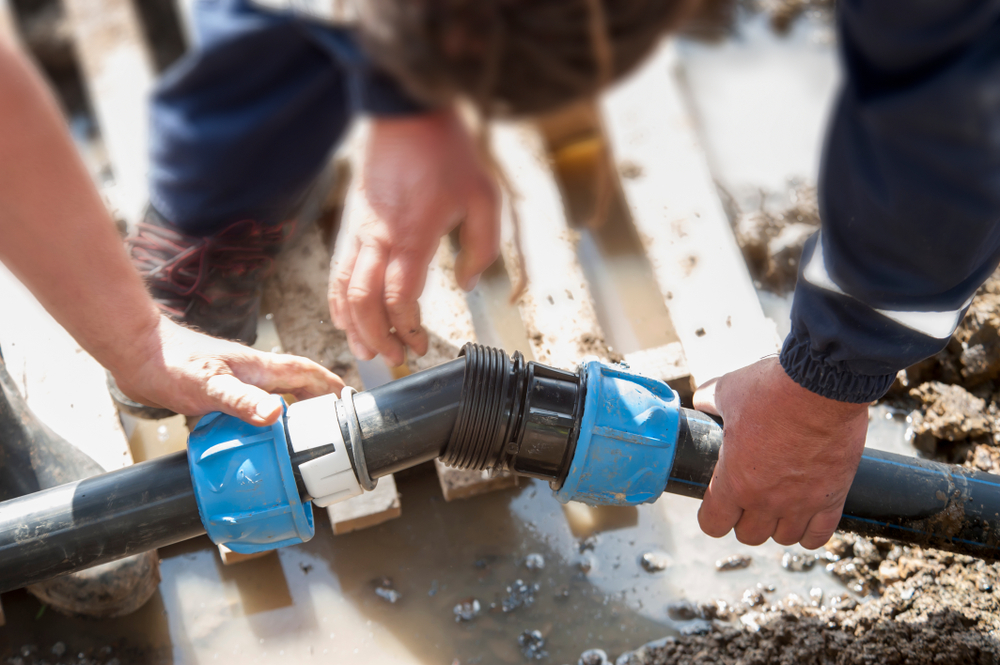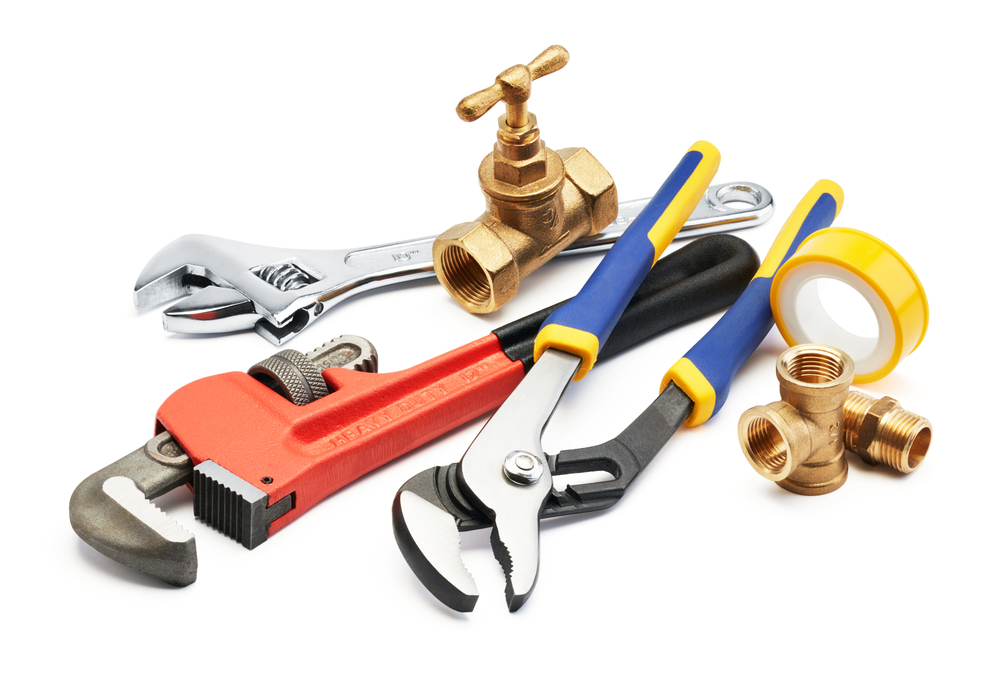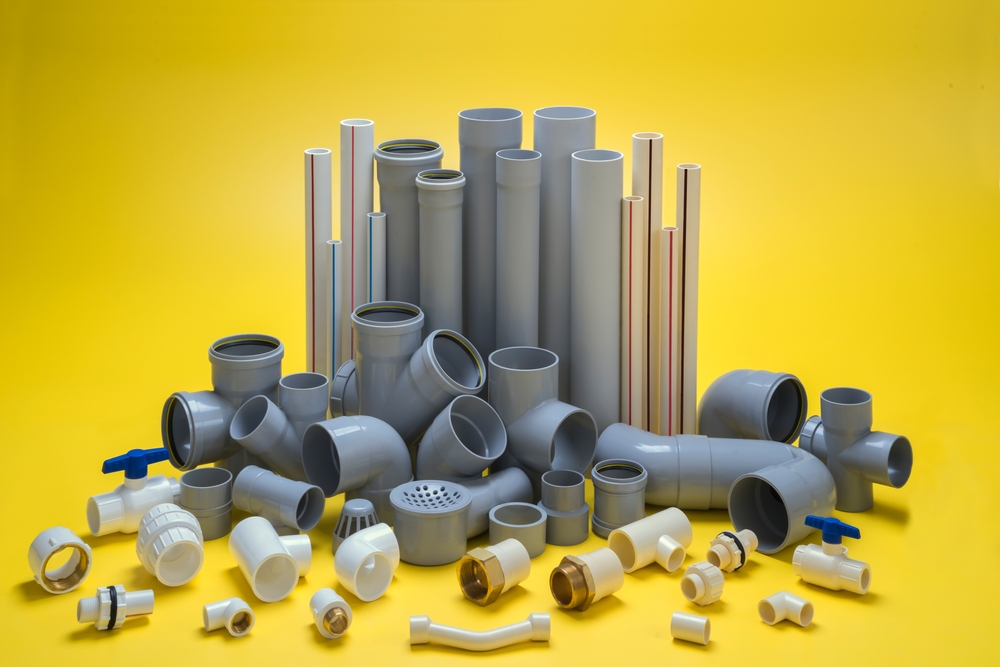Embarking on plumbing projects at home can be both exciting and daunting. Whether it’s fixing a leaky faucet, installing a new toilet, or repairing a burst pipe, having the right tools and materials is crucial for success. In this guide, we’ll explore the essential tools and materials every homeowner should know about before tackling any plumbing task.
Common Plumbing Projects
Before diving into the tools and materials, let’s take a quick look at some common plumbing projects homeowners may encounter:

Fixing Leaky Faucets:
Leaky faucets are not only annoying but can also waste a significant amount of water if left unattended. The most common cause of a leaky faucet is a worn-out washer, which can easily be replaced with the right tools.
Unclogging Drains:
Clogged drains are a common issue in many households and can occur in sinks, showers, or toilets. A plunger is often the first tool homeowners reach for when faced with a clogged drain, but for more stubborn blockages, an auger or snake may be necessary.
Installing or Repairing Toilets:
Whether it’s replacing a broken toilet or installing a new one, having the right tools and materials is essential for a successful installation. This includes wrenches, bolts, wax seals, and caulking.
Repairing Burst Pipes:
Burst pipes can cause extensive water damage if not addressed promptly. To repair a burst pipe, homeowners will need pipe cutters, pipe fittings, solder, and a torch for soldering copper pipes.
Replacing Showerheads or Faucets:
Upgrading showerheads or faucets is a common home improvement project that can improve water efficiency and aesthetics. Basic tools like wrenches and pipe tape are needed for this task.
Installing Water Filters or Softeners:
Water filtration and softening systems can improve the quality of water in your home. Installing these systems may require cutting into existing plumbing lines and securing fittings with pipe tape or cement.
Now that we have an overview of potential tasks let’s delve into the tools required to get the job done.
Essential Tools
Having the right tools can make all the difference in the success of a plumbing project. Here are some essential tools every homeowner should have in their plumbing toolkit:

Adjustable Wrench:
An adjustable wrench, also known as a crescent wrench, is a versatile tool used for tightening or loosening nuts and bolts of various sizes. Its adjustable jaw allows it to grip different sizes of fasteners, making it indispensable for plumbing tasks.
Pipe Wrench:
A pipe wrench is a heavy-duty tool designed specifically for gripping and turning pipes and fittings. It features serrated teeth that provide a strong grip without damaging the pipe’s surface. Pipe wrenches come in various sizes for different pipe diameters.
Pipe Cutter:
A pipe cutter is essential for cutting pipes cleanly and accurately. It consists of a sharp cutting wheel that scores the surface of the pipe as it rotates around it. Once the pipe is scored, the cutter exerts pressure, causing the pipe to snap cleanly.
Plunger:
A plunger is a must-have tool for every homeowner and is used to unclog drains and toilets. It works by creating a seal around the drain or toilet bowl and exerting pressure to dislodge blockages. There are two types of plungers: cup plungers, which are used for sinks and tubs, and flange plungers, which are designed for toilets.
Pipe Tape:
Pipe tape, also known as thread seal tape or Teflon tape, is a thin, white tape used to seal threaded pipe joints to prevent leaks. It is wrapped around the threads of pipes and fittings before they are screwed together, creating a tight seal that prevents water from leaking out.
Hacksaw:
A hacksaw is a versatile cutting tool that is useful for cutting through various materials, including pipes and hardware. It consists of a fine-toothed blade attached to a frame, which allows for precise cuts in tight spaces.
Basin Wrench:
A basin wrench, also known as a faucet wrench, is designed to reach tight spaces under sinks to tighten or loosen nuts. It features a long handle with a swiveling jaw that adjusts to different angles, making it ideal for working in confined spaces.
Pliers:
Pliers are essential tools for gripping, bending, and cutting various plumbing components. They come in various types, including adjustable pliers, needle-nose pliers, and channel-lock pliers, each suited for different tasks.
Auger or Snake:
An auger or snake is a flexible tool used for removing stubborn clogs from drains and pipes. It consists of a long, coiled wire or cable with a corkscrew-like tip that can be inserted into drains to break up blockages.
Plumber’s Putty:
Plumber’s putty is a soft, moldable material used to create watertight seals around fixtures and drains. It is typically applied to the base of faucets, drains, and other plumbing fixtures before installation to prevent water from leaking out.
Each of these tools serves a specific purpose and having them readily available can save both time and money when tackling plumbing projects.
Essential Materials
In addition to tools, having the right materials is equally important. Here are some essential materials you’ll likely need for plumbing projects:

PVC Pipes and Fittings:
PVC (polyvinyl chloride) pipes and fittings are commonly used for drain, waste, and vent systems in residential plumbing. They are lightweight, durable, and resistant to corrosion, making them ideal for a variety of applications.
Copper Pipes and Fittings:
Copper pipes and fittings are ideal for water supply lines and durable installations. They are resistant to corrosion and can withstand high temperatures, making them suitable for both hot and cold water distribution.
PEX Tubing and Fittings:
PEX (cross-linked polyethylene) tubing and fittings are flexible and easy to work with, making them a popular choice for residential plumbing installations. They are resistant to corrosion and freezing and can be used for both hot and cold water lines.
Pipe Cement:
Pipe cement, also known as solvent cement, is used to create strong and permanent bonds between PVC pipes and fittings. It works by chemically fusing the surfaces of the pipe and fitting together, creating a watertight seal that prevents leaks.
Teflon Tape:
Teflon tape, also known as thread seal tape, provides a reliable seal on threaded pipe joints to prevent leaks. It is wrapped around the threads of pipes and fittings before they are screwed together, creating a tight seal that prevents water from leaking out.
Pipe Insulation:
Pipe insulation helps prevent pipes from freezing in cold climates by providing a barrier between the pipe and the surrounding air. It is typically made from foam or fiberglass and can be easily installed on both hot and cold water pipes.
Washers and O-Rings:
Washers and O-rings are essential for creating watertight seals in faucets and fixtures. They are placed between the various components of a faucet or fixture to prevent water from leaking out.
Flux and Solder:
Flux and solder are necessary for soldering copper pipes and fittings together. The Flux is applied to the surfaces of the pipe and fitting before they are heated, helping to clean and prepare the surfaces for soldering. Solder is then applied to the heated joint, where it flows into the gap between the pipe and fitting, creating a strong and permanent bond.
Drain Cleaner:
Drain cleaner is a chemical solution used to break down clogs and keep drains flowing smoothly. It works by dissolving organic materials, such as hair, grease, and soap scum, that can build up in drains over time. There are various types of drain cleaners available, including liquid, gel, and foaming formulas, each suited for different types of clogs.
Waterproof Sealant:
Waterproof sealant, such as silicone or polyurethane caulk, is used to seal gaps and leaks around fixtures and pipes. It forms a flexible, waterproof barrier that prevents water from seeping into cracks and crevices, helping to prevent water damage and mold growth.
These materials are essential for various plumbing projects and having them on hand ensures you’re prepared for any task that comes your way.
Tips for Choosing the Right Tools and Materials
With so many options available, choosing the right tools and materials can be overwhelming. Here are some tips to help you make the best choices:
- Research: Take the time to research the specific tools and materials needed for your project. Look for reliable sources of information, such as DIY guides, manufacturer websites, and online forums, to learn more about the tools and materials available and their suitability for your project.
- Quality Matters: When it comes to tools and materials, quality matters. Invest in high-quality products from reputable manufacturers, even if they may cost a bit more upfront. Quality tools and materials are more durable, perform better, and are less likely to fail, saving you time and money in the long run.
- Consider Your Skill Level: Be honest about your skill level and choose tools and materials that match your abilities. If you’re a beginner, opt for basic tools and materials that are easy to use and require minimal expertise. As you gain experience and confidence, you can gradually invest in more advanced tools and materials.
- Read Reviews: Before making a purchase, take the time to read reviews and testimonials from other homeowners who have used the tools and materials you’re considering. Pay attention to both positive and negative feedback to get a balanced perspective on the product’s performance, durability, and value for money.
- Consult Experts: If you’re unsure about which tools or materials to choose, don’t hesitate to seek advice from plumbing professionals or knowledgeable staff at hardware stores. They can provide valuable insights and recommendations based on their expertise and experience, helping you make informed decisions.
By following these tips, you can ensure you’re equipped with the right tools and materials for successful plumbing projects.
Conclusion
Plumbing projects may seem daunting, but with the right tools and materials, they become much more manageable. From fixing leaks to installing new fixtures, having the necessary equipment and supplies is essential for success. By familiarizing yourself with the essential tools and materials outlined in this guide and following the tips provided, you can tackle any plumbing task with confidence.
Remember, investing in quality tools and materials is an investment in the long-term integrity of your home’s plumbing system. So, stock up your toolkit, roll up your sleeves, and get ready to tackle those plumbing projects like a pro! With the right tools, materials, and know-how, you can take on any plumbing project with confidence and achieve professional-quality results.
Plumbing Services CA
https://maps.app.goo.gl/31Yt4rhDrainzNJ4A
(279) 203-0765
https://plumbingservicesca.com/
